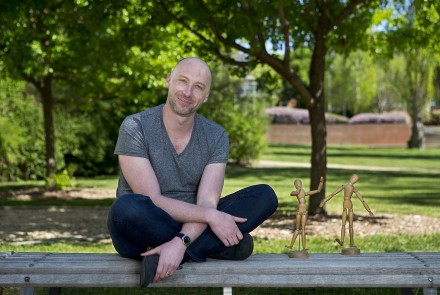Friendly faces
He had an imaginary wife and children but divorced his wife because she spoke too much
Magic Peacock the Las Vegas dancer, the three sisters behind the mirror and Mr Buggy from Hawaii. Developmental psychologist Dr Evan Kidd often meets fantastic characters such as these as he investigates how imagined playmates affect children’s development.
“I am constantly surprised by the variety of imaginary friends I come across,” says Kidd. “They can be people, animals, objects — I’ve even met kids who have imaginary machines. They are very real to the children, who treat them as sentient, animate beings.”
Now Kidd has shown that imaginary friends come with benefits.
Children with imaginary friends are able to take the perspective of adults in conversation and understand that others think differently to themselves at a younger age than those without.
“Having an imaginary friend forces you to simulate the mindset of your imaginary friend, and that gives you practice at taking the perspective of other people,” says Kidd.
The imaginary family of one child in particular sticks in Kidd’s mind.
“He had an imaginary wife and children but divorced his wife because she spoke too much. The mother of his children wasn’t actually his wife, but a nurse who travelled internationally.
“When you think of it from a child’s perspective, they can’t marry and divorce and have kids. That’s one of the great functions of play – it gives them the opportunity to simulate what it’s like to be in that situation.”
The creative processes used to conjure these characters don’t disappear when the children outgrow their imaginary friends; instead they are channelled into different pursuits.
“Published creative writers have a higher incidence of imaginary friends than the regular population.
“They report an interesting effect called the ‘illusion of independent agency’ where they say ‘the characters kind of write themselves’, which seems to be a qualitatively similar process to having a childhood imaginary friend.”
Although the array of imaginary friends is limited only by a child’s imagination, Kidd has noticed some common characteristics.
“Boys have friends who often are more capable than the boys themselves – they will be big and strong and have superpowers. Girls tend to have the opposite and take a nurturing role.”
Kidd says while most children don’t play with imaginary friends beyond the age of nine, some friends hang around much longer.
“We got a letter from a 44-year- old woman who still had her imaginary friend and volunteered to participate in our study,” says Kidd. “Unfortunately she was out of our age range.”
So if you thought imaginary friends disappeared with school uniforms, think again. They are still around, helping us through life.

